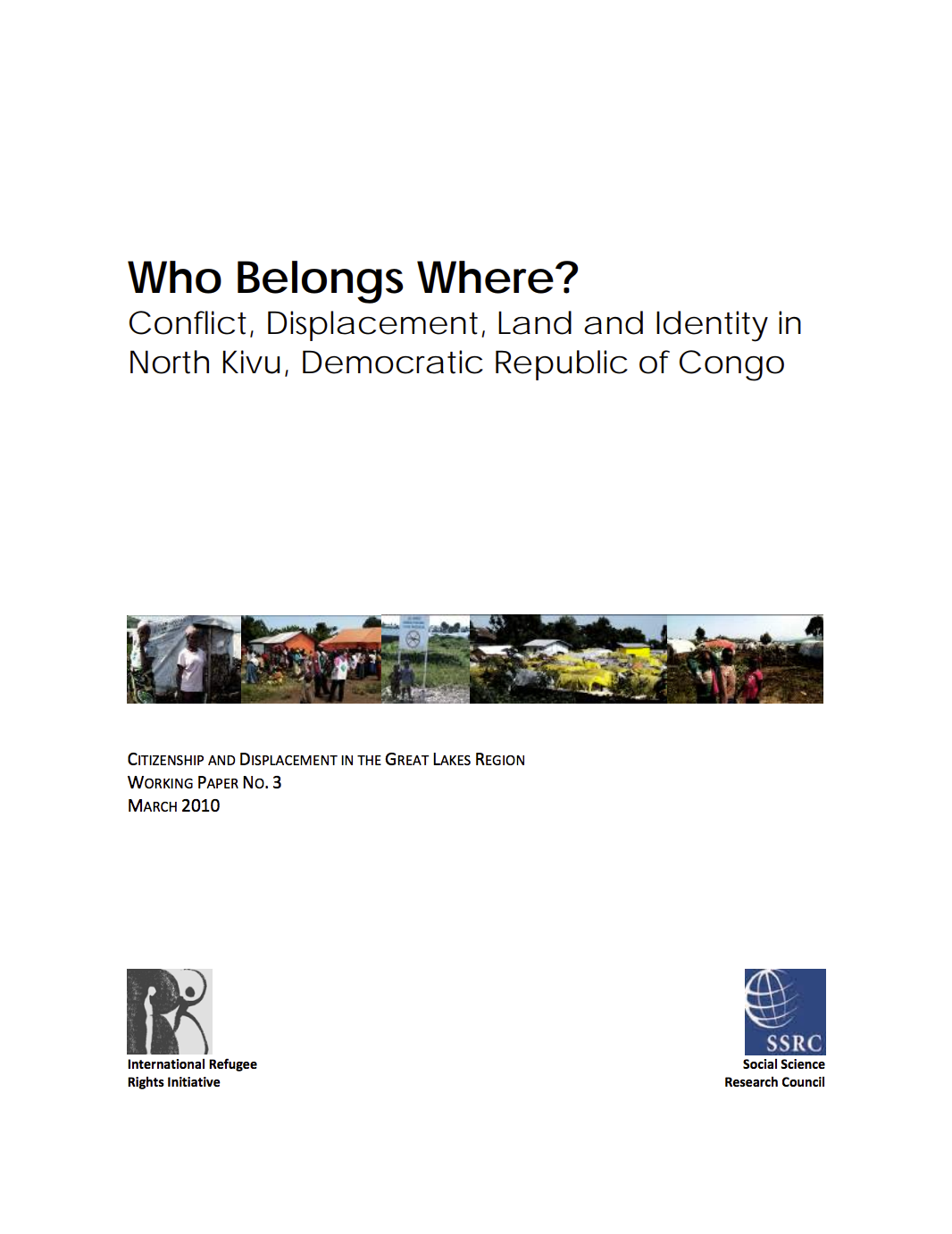Resource information
Conflict in eastern Democratic Republic of Congo (DRC) appears intractable. Since a peace agreement was signed in 2003, officially ending a decade of war in the country, an estimated two million civilians have died and millions of others have been forced to flee their homes, creating one of the world’s worst humanitarian disasters.
The province of North Kivu has been at the centre of much of the fighting, both before and after the 2003 agreement. Although security has recently improved and progress has been made to resolve this ongoing conflict, as exemplified by a series of subsequent peace agreements, fighting continues and the risk of renewed deterioration of the security situation is palpable.1
This paper seeks to tease apart some of the dimensions of this violence through gaining an understanding of how people living in the midst of it – or having fled the midst of it – see the conflict. Based on 157 interviews conducted in June and July 2009 with refugees and internally displaced persons (IDPs) who were displaced from or within North Kivu, it explores the interaction between notions of identity, access to power and, in turn, access to natural resources, including land. Through understanding people’s perceptions of the causes of conflict it begins to explore potential routes to stability and the way in which refugees and IDPs are positioning themselves for return.
Not surprisingly, our findings resonate strongly with analyses of earlier conflicts in DRC, or phases of the conflict, in which scholars and commentators have emphasised the complex dynamics of social inclusion and exclusion that lie at the heart of the violence. That these dynamics have persisted throughout the recent fighting emphasises the fact that the cyclical forces that drive the conflict at a local level have not been broken despite a trail of peace agreements, significant international political engagement, peacekeeping efforts, and a series of military initiatives. It is therefore apparent that the ebb and flow of the war – reduced hostility leading to increased optimism for sustainable peace followed by renewed bouts of fighting – could persist with relentless tenacity unless root causes of conflict are addressed.


